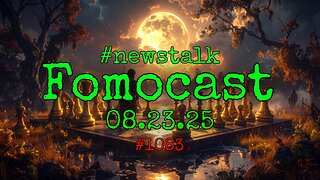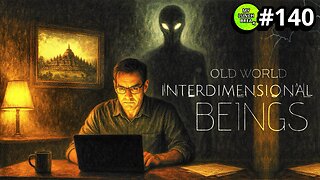Premium Only Content
![FM Town Marty emulator tutorial [tsugaru] and system review / thoughts](https://1a-1791.com/video/s8/1/t/_/B/D/t_BDi.qR4e-small-FM-Town-Marty-emulator-tuto.jpg)
FM Town Marty emulator tutorial [tsugaru] and system review / thoughts
First off, the emulator can be downloaded here: https://github.com/captainys/TOWNSEMU
Hello everybody and welcome back!, today I want to talk about something I rarely get the chance to talk about, on here. Obscure systems that I have never heard of. There aren't many. Until recently, when I heard about the FM towns. So I've decided to talk a bit and then help you guys set up the stand alone emulator if you would like to play out some of the games for yourselves.
The FM Towns was a Japanese gaming computer, built by Fujitsu. It was manufactured from February 1989 to the summer of 1997.
The FM towns and FM towns Marty were only released in Japan.
#fmtowns #fmtownsmarty #emulation
The FM Towns was an unpopular gaming PC, yet very powerful for its time -- with 32k colors on screen and a CD ROM disc system. Back in 1989 this was impressive. The FM Towns featured a custom Fujitsu graphics chip, enabling video resolution modes up to 720×512!! Yeah!!! This was in 1989!
It had a slew of arcade ports, most of which are absolutely amazing. There was a slightly upgraded FM Towns "Marty" released a few years later, but to my understanding the original hardware of the FM towns can handle some of the newer games with a small memory upgrade?
For a system that came out in 1989, creating arcade perfect ports of games being released around the same time, well that was unheard of. I think the only other system to do that was the Sega Dreamcast. I keep on trying to wrap my brain around the year 1989 as I play these games, and I can only think that if this system were to have been released in America in 1989, the world of gaming as we know it today could be quite different, with Fujitzu leading the way.
I did not expect the sound to be so wonderful. The sound chip is the Ricoh RF5c68, an eight-channel sound chip developed by Ricoh. It is notably used in Fujitsu's FM Towns computer series, along with Sega's System 16 and System 32 arcade game system boards. The audio is outstanding, and rivals the coveted SNES sound chip developed by Sony and released years later, in my honest opinion. When I load up marble madness in a little bit I hope you can hear it as beautifully as I did while playing the game.
The emulator tutorial [Tsugaru] is pretty self explanatory. Just ensure you have the proper bios files.
-David
-
 1:00
1:00
Retro Replay
1 year ago $0.01 earnedA playable Demo of Zelda 64 in Unreal Engine 5 is out.
53 -
 3:36:03
3:36:03
Mally_Mouse
1 day ago🌶️ 🥵Spicy BITE Saturday!! 🥵🌶️- Let's Play: Tower Unite!
37.2K1 -
 58:59
58:59
MattMorseTV
6 hours ago $1.12 earned🔴Trump just BROKE Newsom.🔴
55K63 -
 18:14
18:14
Her Patriot Voice
6 hours agoWho Is WORSE for NYC: Trump Girl or Socialist?
32K27 -
 3:39:42
3:39:42
SavageJayGatsby
6 hours agoSpicy Saturday with Mally! | Road to 100 | $300 Weekly Goal for Spicy Bites!
36.5K1 -
 3:35:50
3:35:50
FomoTV
8 hours ago🚨 Swamp Theater: FBI Raids Bolton 🕵 Still NO Epstein Files, Trump's Troops & the Red Heifer Hoax 🐂 | Fomocast 08.23.25
14.6K3 -
 6:04:40
6:04:40
Akademiks
11 hours agoRoc Nation & Meg Thee Stallion did a 7 HOUR Deposition with me. Drake Secret Kid Finally Revealed.
52.8K2 -
 24:19
24:19
Stephen Gardner
7 hours ago🚨BREAKING: FBI Raid of John Bolton’s House Reveals THIS!
54.9K134 -
 8:31
8:31
MattMorseTV
9 hours ago $1.12 earnedTexas just did the IMPOSSIBLE.
48K63 -
 24:39
24:39
MYLUNCHBREAK CHANNEL PAGE
1 day agoInterdimensional Beings at Borobudur
56.1K30